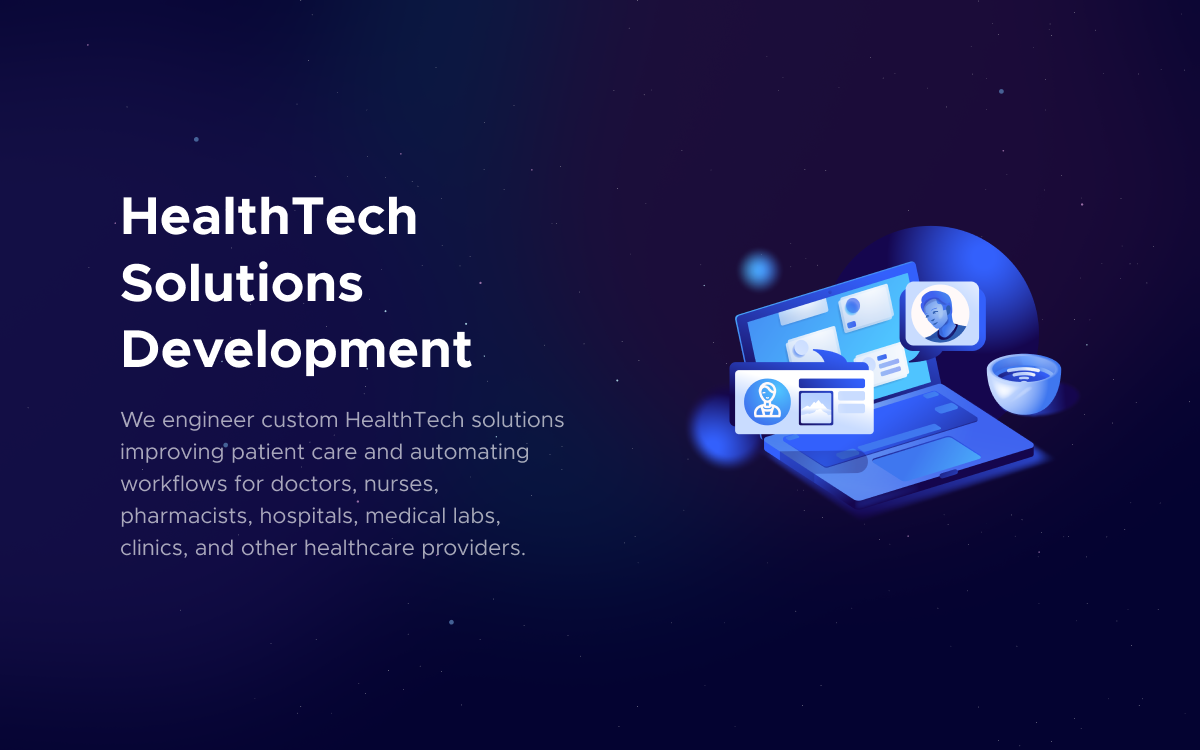How COVID-19 Affected IT in the Healthcare Industry
With the COVID-19 pandemic, IT healthcare has taken a seat in the front row. Discover the key consumer expectations transforming the industry.
COVID-19 has undermined public health systems around the globe. The burden on hospitals turned out to be arduous. Patients and investors had to set their hopes on technologies and healthcare development projects. What will be the next move in the IT industry?
The global healthcare tech market size is predicted to reach USD 270.3 billion by 2021 compared to USD 227.5 billion in 2020. Apart from the pandemic, the industry is driven by the growing use of big data, the necessity to reduce skyrocketing healthcare costs, and the investment appeal of healthcare information technologies. The consumer market includes healthcare providers which have the largest share, insurance companies or payers, pharmaceutical companies, biotechnology, and research centers.
The most popular products of the healthcare industry are the following:
- Artificial intelligence solutions;
- Mobile Health;
- Telehealth solutions;
- Healthcare services with blockchain;
- E-Prescribing;
- Occupational health software;
- Healthcare payer solutions
COVID-19 Impact on the Patient Journey
In general, the COVID-19 software is aimed to solve the issues related to resource constraints of public healthcare. However, IT solutions are also expected to lead patient engagement to a higher level. At the same time, patients are looking for better personalization and intuitive use of healthcare solutions.
68 % of healthcare providers are digitally transforming while seeking improved quality of care for patients. Let’s consider the key consumer expectations that are already being translated into solutions.
Single Electronic Health Record (EHR). Digital patient records or EHRs should be accessible to any healthcare provider dealing with a patient. This kind of solution will help to save complete information and can help in a crisis, for example, when a patient gets sick at home. If an EHR is available in apps and has integration with remote monitoring systems, clinical pictures will be more clear.
Improved data-sharing practices. In order to facilitate research and treatment development, healthcare institutions came up with a number of ways to share data related to the virus. This has led to the creation of large COVID-19 databases specialists could use. The approach can also be used with patient-level data that is helpful for medical consilium involving members of several institutions.

Telehealth shift. The number of virtual visits has augmented with the outbreak of COVID-19, particularly in the case of follow-up appointments. Such experience shifts patient expectations and online consultations continue. The solution saves time and transportation costs. Therefore, the post-coved healthcare industry should be prepared to make adjustments.
Patients’ privacy. Remote communications imply a high level of data protection. On the one hand, this means the development and adoption of special security protocols. On the other hand, tech companies provide non-public facing solutions for online communication. Providers should protect EHRs from data leakage while insurance companies consider the projects of insurance benefits for such cases. Blockchain plays an important role here.
Internet of Medical Things (IoMT). Wearables are widely adopted now and can play a crucial role in health monitoring and crisis preventing. Combining telehealth solutions with IoT achievements, providers will obtain many interesting options for providing healthcare in a more effective way. It’s not just about various monitors but more sophisticated solutions like smart pills.
Pandemic Forecasting. Artificial intelligence can help to forecast and identify pandemics. Related software analyzes certain vectors to predict or eliminate the risk: climate conditions, health system state, ecology, animal populations, popular itineraries. An ounce of prevention is worth a pound of cure, so investments in AI healthcare seem to be a smart move.
Mental health support. Stress and negative effects of mental health became too widespread in 2020. The lockdown forced people to look closer at their fears and unresolved issues. This involved the demand for psychological assistance in the form of mobile apps or simply online consultations with therapists. Mental healthcare is blossoming and the trend is quite steady.

What’s Next: Uncover the Potential
It’s difficult to predict what exactly lies ahead. Nonetheless, one thing is evident: the health system is fundamentally changing in the face of global pandemic. Governments and companies are attempting to allocate resources to provide the best possible services. The tech industry, in turn, is helping to fight the crisis and taking patient expectations to a new level that makes digital healthcare solutions attractive for investments.
If you’re ready to accept the existing challenges and looking for the services of a healthcare development company, Fively is here to support and implement your project.

Need Help With A Project?
Drop us a line, let’s arrange a discussion















